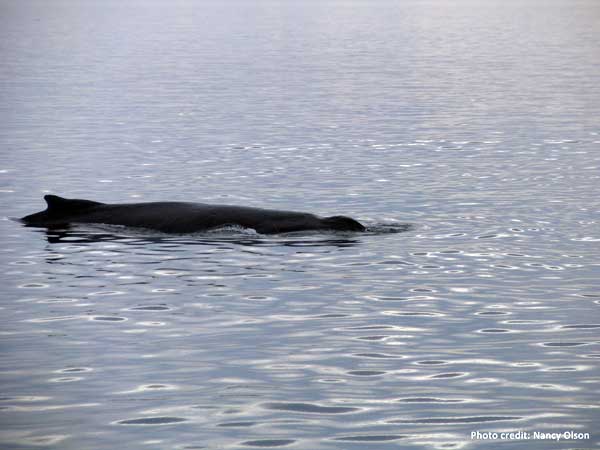Puget Sound is home to many animals, a stop-over for others. The Humpback Whale is one such visitor. Passing the Washington coast on their long migration, a few Humpbacks enter Puget Sound each year.
This acrobatic whale winters in the tropics, breeding and calving. It summers in cold, rich Alaskan waters feeding on small schooling fish and little shrimplike creatures called krill. Humpbacks use a variety of methods to capture large quantities of the small creatures they eat. Their most inventive technique is bubble netting. From below their prey, the whales blow bubbles through their blowholes making a curtain to corral the prey. Then with mouth open wide, the whale swims upward through the mass engulfing its meal.
Male Humpbacks are well known for their long, complex songs, created by forcing air through nasal cavities. Sung primarily in the tropics, each song is unique and changes yearly. Why Humpbacks sing remains a mystery.
Scientists recognize individual Humpback Whales by the distinctive markings on their flukes, or tail, which they raise high just before diving.
In our waters, these gentle giants are slowly recovering from years of whaling. But danger remains. Each year around the world, thousands of whales, porpoises, and dolphins die entangled in fishing nets.

